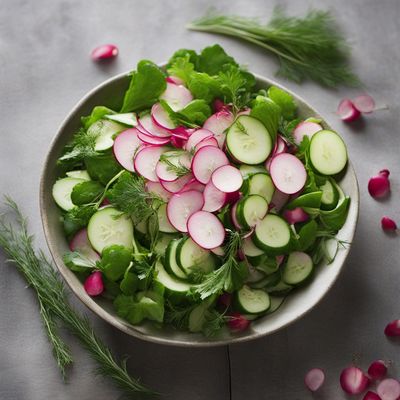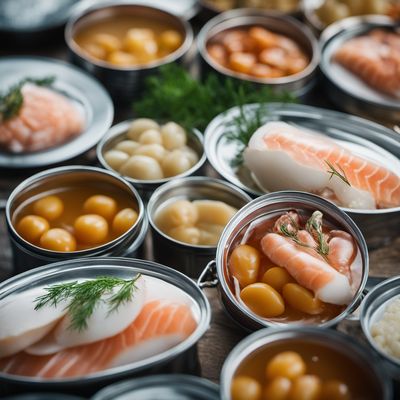
Ingredient
Processed or preserved seafood
The Ocean's Bounty: Processed or Preserved Seafood
Processed or preserved seafood refers to seafood products that have undergone specific preservation methods such as canning, smoking, salting, or pickling. These methods help extend the shelf life of seafood and enhance its flavor. Common examples include canned tuna, smoked salmon, salted anchovies, and pickled herring. Processed or preserved seafood is widely used in sandwiches, salads, pasta dishes, and appetizers.
Origins and history
The preservation of seafood has been practiced for centuries as a way to ensure a stable food supply and preserve the freshness of fish and shellfish. Canning, smoking, salting, and pickling are traditional preservation methods that have been used by different cultures around the world. Today, processed or preserved seafood is enjoyed globally and is a staple in many cuisines.
Nutritional information
Processed or preserved seafood can be a good source of protein, omega-3 fatty acids, and various vitamins and minerals. However, it is important to note that some preservation methods, such as salting or pickling, can increase the sodium content of the seafood.
Allergens
Individuals with seafood allergies should avoid processed or preserved seafood. Additionally, some people may be sensitive to the high sodium content in certain preserved seafood products.
How to select
When selecting processed or preserved seafood, check the packaging for quality and freshness. Look for products that are properly sealed and free from dents or bulges. For canned seafood, choose products that have a firm texture and are packed in oil or water. Smoked seafood should have a rich color and a pleasant smoky aroma.
Storage recommendations
To maintain the freshness and quality of processed or preserved seafood, store it in a cool, dry place away from direct sunlight. Once opened, refrigerate the product and consume it within the recommended time frame.
How to produce
Processed or preserved seafood is typically produced by specialized manufacturers using specific preservation techniques. It is not recommended for amateurs to attempt these processes at home due to safety concerns and the need for specialized equipment.
Preparation tips
Processed or preserved seafood can be used in a wide range of dishes. Canned tuna is commonly used in sandwiches, salads, and pasta dishes. Smoked salmon is often enjoyed on bagels or used as a topping for sushi. Salted anchovies and pickled herring are popular ingredients in Mediterranean and Scandinavian cuisines, respectively.
Culinary uses
Processed or preserved seafood is commonly used in various cuisines around the world. Canned tuna is a staple in many Western dishes, while smoked salmon is a delicacy in Scandinavian cuisine. Salted anchovies are commonly used in Mediterranean dishes like Caesar salad and pizza. Pickled herring is a traditional ingredient in Scandinavian cuisine, often served with potatoes and sour cream.
Availability
Processed or preserved seafood is widely available in supermarkets and grocery stores worldwide. It can also be purchased online from specialized retailers.
More ingredients from this category
Recipes using Processed or preserved seafood

Baechu-kimchi with a Twist
Spicy and Tangy Korean Baechu-kimchi Infused with Unique Flavors

Estonian-inspired Apple and Beetroot Salad
Beetroot and Apple Delight: A Vibrant Estonian Salad

Monmouthshire-inspired Petiscos
Welsh Delights: Monmouthshire-inspired Petiscos

Mauritian-style Boudin Blanc with Apples
Savory Delight: Mauritian Boudin Blanc Infused with Apple Goodness

Guatemalan Apple Crisp
Delicioso Manzana Crisp: A Guatemalan Twist on a Classic American Dessert

Red Slaw Recipe
Tangy Beet and Cabbage Slaw

New Nordic Sillsalat with a Twist
Nordic Delight: A Modern Twist on Sillsalat

Chiles en Nogada with a Twist
Fiesta on a Plate: A Modern Twist to Traditional Chiles en Nogada

